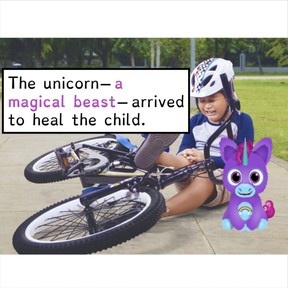
Punctuating nonrestrictive elements
I can use punctuation to set off nonrestrictive elements.



8,000 schools use Gynzy
92,000 teachers use Gynzy
1,600,000 students use Gynzy
General
In this lesson, students will learn to identify restrictive and nonrestrictive elements. They will use commas, parentheses, and dashes in their writing.
Standards
CCSS.ELA-Literacy.L.6.2a
Learning objective
Students will be able to use punctuation to set off nonrestrictive elements.
Introduction
Students will review basic comma usage that they’ve learned up to this point.
Instruction
Students will learn to identify a nonrestrictive/parenthetical element and how to set it off through punctuation. They will also learn the distinctions between commas, parentheses, and dashes. Students will engage in activities, including deciding if the underlined element is restrictive or nonrestrictive, highlighting the nonrestrictive element, using the designated punctuation to separate the nonrestrictive element, and inserting the nonrestrictive element into a sentence.
Quiz
Students are given 10 exercises in which they will identify restrictive and nonrestrictive words. They will then add commas, parentheses, or dashes to sentences with nonrestrictive elements.
Closing
Students will work in pairs to add nonrestrictive elements to a sentence (one using commas, one using parentheses, and one with dashes).
The online teaching platform for interactive whiteboards and displays in schools
Save time building lessons
Manage the classroom more efficiently
Increase student engagement
Discover more!
About Gynzy
Gynzy is an online teaching platform for interactive whiteboards and displays in schools.
With a focus on elementary education, Gynzy’s Whiteboard, digital tools, and activities make it easy for teachers to save time building lessons, increase student engagement, and make classroom management more efficient.



